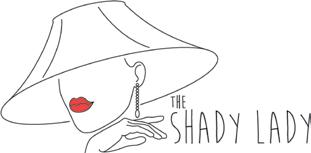
11 minute read
Tales of Technology
In Alabama over Christmas, I was driving to the childhood home of a dear old friend – a house I’d been to dozens of times, 40-plus years ago – and I got lost.
Granted, I’d made a quick detour on the way, to marvel at the Sandhill Cranes that congregate by the thousands at Wheeler Wildlife Refuge each winter. But that’s not why I got lost.
No, I blame the Map Lady in the Phone for that . . . and progress. Which, come to think of it, are not unrelated.
First, the progress. This beautiful house where my friend grew up – which looks just like it did back in the day – is no longer “out in the country.” Since I left Decatur 40 years ago, “the country” has become a neighborhood. I didn’t recognize the place.
And then there’s the fact that the Map Lady in the Phone literally steered me wrong. Told me to turn left when I should have gone straight. Who knew that could happen? I thought the Map Lady was infallible.
Fortunately, the phone still functioned in its original capacity, and I used it to call my mother – she’s smarter than any Map Lady and knows my hometown like the back of her hand – and she easily got me there. (By the way, that’s a strange cliché if you stop to think about it. How well do you really know the back of your hand? I spend very little time looking at mine and I’m not even sure I could pick it out of a lineup. But I digress.)
I got to the luncheon with my besties of yore only five minutes late, and we had a marvelous time! We’d planned to gather from noon to 2pm, but it started snowing around 1, and we fled at 1:30. Alabama girls don’t know how to drive in snow. We tend to panic. (Don’t laugh. You live in South Carolina. You know.)
On the way home, I pondered the fact that my 83-year-old mother had managed what the Map Lady in the Phone had not. Say what you will about our Artificially Intelligent future – for now, humans are still your best option sometimes. I find that comforting.
On a related note, I’ve been toiling in the fields of technology on several fronts, lately. Months ago, Hargray informed me that they would be ceasing their email service as of December 15th, 2022. They had been my email carrier for 20-ish years, so you can imagine the anxiety that ensued.
First, I was in denial. The cutoff date was “in the future,” so I ignored it. Besides, Hargray had threatened to do this before, and nothing had come of it, so maybe this time would be the same.
But as December unfolded, I felt the date creeping toward me and a pit growing in my stomach. I finally called Hargray around the 10th, waited on hold interminably for a human voice, then asked for a confirmation of the December 15th deadline. “Yes, ma’am,” I was told. “Your service will definitely end on December 15th.”
“Do you know what time on December 15th?” I asked, with both hope and dread. “Will I have until midnight to get my affairs in order?” (Yes, I was now using the language of the terminally ill.)
“I’m not sure,” the human voice replied. “Probably more like a minute AFTER midnight on December 15th.”
“Wait, so you’re saying it will end in the middle of the night on December 14th? Like, I’ll wake up December 15th and my service will be gone?”
“Probably so, ma’am.”
Sigh. Time to face the music.
To be clear, Hargray handled my personal email account. But my professional account – editor@lcweekly.com – directed all that email to my Hargray account, as well. In other words, all my email – both personal and professional – had been ending up in my Hargray inbox for 20 years. Much of it was still there. Just in case I needed it.
And because I’m super lazy.
I’d had a gmail account for a few years, which I hardly ever used, so I set about making it my new (and only) personal email account. I asked my “web guy” to reroute all my professional email there by December 15th, then went about changing the email address on all my online accounts.
Do you have any idea how many online accounts you have? I didn’t! The big ones were easy – stuff like Amazon, Facebook, Instagram – but there were lots of others I’d opened over the years, some of which I’d written down on my “passwords” list, others of which had completely slipped my mind. Every day I’d remember another one – a blog here, a Substack there. My subscription to the New York Times. Reuters. My Zappos account. Etcetera. I’m quite certain I forgot plenty of others, but I figured they weren’t that important to me in the first place.
So, December 15th came and went, and all seemed well. I’d sent out notices to all my contacts, and I seemed to be receiving both personal and professional email at my new gmail account. Whew! Could it really be that easy?
Then, in late December – after Christmas – all hell broke loose. (Okay, I’m using the term “hell” very . . . loosely. This was definitely a First World Problem.) I began hearing from my professional contacts – mostly PR people – that their press releases were “bouncing back.” Because of these “bounce backs,” they were sending the releases over and over again. The weird thing is that I was receiving their original emails. On my end, there appeared to be no problem – except that I was receiving the same releases over and over again.
Enter another long, confusing call to Ha gray. Turns out they hadn’t actually closed my account on December 15th. In fact, that account was still open, the inbox was full – why would I clean out an inbox that was supposed to be dead?! – and while my professional email had been directed to my new gmail account, it had never been UN-directed to my Hargray account. (Why would my web guy un-direct email to an account that was supposed to be dead?!)
Are you thoroughly confused now? I was too. All you really need to know is this: If you send me a press release between now and January 12th – my new shutdown date, Hargray promises! – you might receive a bounce back notice. If you do, ignore it. I have your release.
These are but two small tales of one woman’s tech troubles. I was thinking of going bigger – maybe writing about the much-discussed Twitter Files. But half the people I know think it’s the biggest story of the year, while the other half think it’s a “nothing burger.” I think they’re both wrong, and who needs the headache of another pointless argument?
I also considered including the rise and fall of Sam Bankman-Fried, the once dazzling young cryptocurrency entrepreneur who’s now being compared to Bernie Madoff and may spend the rest of his life in prison. But I’d have to have some understanding of Bitcoin, and it’s completely beyond my ken. (They don’t call it “crypto” for nothin.’) I read a sad article about Sam’s parents, and how their lives have been destroyed along with their son’s. Two Stanford professors who’ve had to resign their positions, they are reportedly generous philanthropists and very nice people. Like most parents, they were merely supporting their child’s dream.
Bless their hearts. I bet they didn’t understand Bitcoin, either.
Largest Shade Selection in Beaufort County! Bring In Lamps for Shading End of Year Sale
Select Lamps 60% OFF Lamp Repair!
Only $23.95
Hours: Tues-Fri 10-4
Call 843-605-6657 Closed: Saturday, Sunday & Monday
(843) 605-6657
Margaret Evans RANTS
& RAVES

Contemplating the Meaning of Rituals
Although I have tried, I have never been able to get swept up and away into the euphoria of New Year’s Eve. I never quite understood the hoopla invested in the ten- second countdown to the incoming year. Even in the midst of exuberant party goers, I felt like an imposter. Over the years I’ve gotten dressed, braved bitter cold temperatures and paid my share of jacked-up door fees to participate in the ten-second ritual. I have blown my share of party horns and yelled Happy New Years at the top of my lungs. But, I was never fully in. The whole of the moment, that ten second period of utter abandonment, escaped my understanding. I tried, but I couldn't get past adult-beings screaming frantically over what I pragmatically viewed as nothing more than the passage of time. If the moment symbolically represented starting over, didn't we as conscious beings have the power to start over at any given time?
Then something happened this past Thanksgiving that provided me with a different perspective of not only celebrating New Year's, but other holidays as well. The aha- moment came while I was talking with a woman whose insight I'd always admired. We were discussing the history and customs of Thanksgiving. I questioned whether or not holiday traditions were and are based on moral principles, or if they were created to break the monotony of life. Without hesitating, she asserted that human beings needed rituals.
The air of confidence in her statement stopped the chatter in my head. I paused. This in itself was an anomaly for me. My style of communicating is often similar to that of a tennis match. I enjoy the give and take of ideas. I quickly absorb others' opinions, weigh them and either counter or ask questions. However, the authoritative tone of her statement was so confident that it stopped me cold. I sat with it. I questioned it. And I apparently absorbed it, because weeks later I was still asking myself – are rituals needed? Was and is the ten-second countdown some kind of primal acknowledgement of something deep and meaningful? If so, what is the meaning?
Her sage-like assertion sent me on a mission. I needed to find out if humans did indeed need rituals. If so, was the observance of passage of time, like the New Year's Eve countdown, one of the rituals we needed? My self-assigned mission took me to the ancient city of Babylon, where some 4,000 years ago, the first New Year's celebrations began. The original eleven-day festival started in March, which was then the beginning of the new year. According to Babylonians' belief, spring represented the rebirth of nature, as well as, the revitalization of the collective spirit of the people.
What if, I thought? What if, some of the practices we observe today are shrouded in ancient wisdoms that have survived the test of time? What if our forefathers and mothers possessed knowledge of the human psyche that we have forgotten? What if they foresaw a time when, like today, human beings would become so tied to the daily rhythm of work, they would forget who they were and become disconnected from nature? What if the ten- second countdown is and was a way to provide us human beings with a moment to pause in order to reconnect with our fullest potential?
Did the creators of New Year's celebrations see the future? Is it possible that they foresaw the industrial and technological revolutions that would trigger a zombie-like dependence on comfort-conveniences and technical devices that keep us plugged into another reality? Could they have known that we would reach a place in time in which we would be lured into a sleeplike existence? Did they see the mechanical rhythms we would shower to, work to and return home to?
If our ancestors understood that we human beings become disconnected from nature and one another perhaps they created rituals to help us compensate. Maybe customs associated with special feasts and occasions are meant to short circuit our spiritual, mental and emotional being in order to reconnect us to the things that matter most in life. What if, I asked, rituals are needed to wake us up to universal themes of love, peace, creativity and the unlimited possibilities that life offers?
Trumpets are often used to announce great events. Perhaps New Year's Eve hooting, hollering and horn blowing are the ritualistic tools revelers use to prepare them for the New Year. Maybe our ancestors weren’t too different from who we are today. While we are consumed with modern technology and the unforgiving regime of nine-to-five work days, our ancestors were quite likely fixated on the demands of farming. Could it be that rituals and ceremonial observations have always been used to jar human beings out of the lull of day-to-day activities in order to reconnect them to nature and God?
It seems appropriate that the first celebrations of a New Year occurred between the end of winter and the beginning of spring. Spring is symbolic of birth. While winter is synonymous with death. The ten seconds between the New Year and the outgoing one can be viewed as a moment of transition. We are between the death of winter and the spring of life. Isn’t it appropriate we enthusiastically bid a farewell to the past and gleefully welcome in the future?
This New Year’s Eve will be a different kind of celebration for me. For the first time in years I will go into the night and enter into the morning with a reverence for what has happened in the past and for what can be in the future. While, I don’t think I will partake in the primal calls of pain and joy by yelling or making noise with noise makers, I do intend to salute the outgoing year and joyfully embrace the New Year.

WHOLLY HOLISTICS
by Susan Madison





